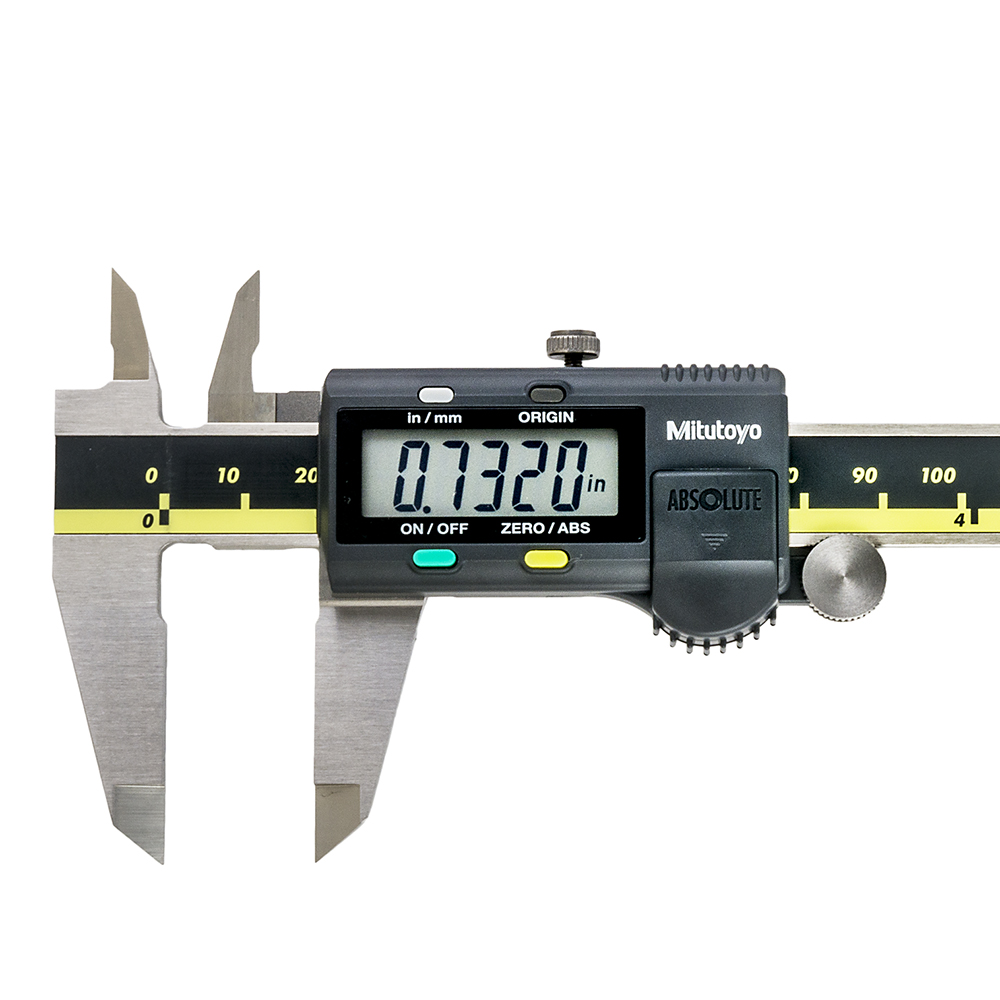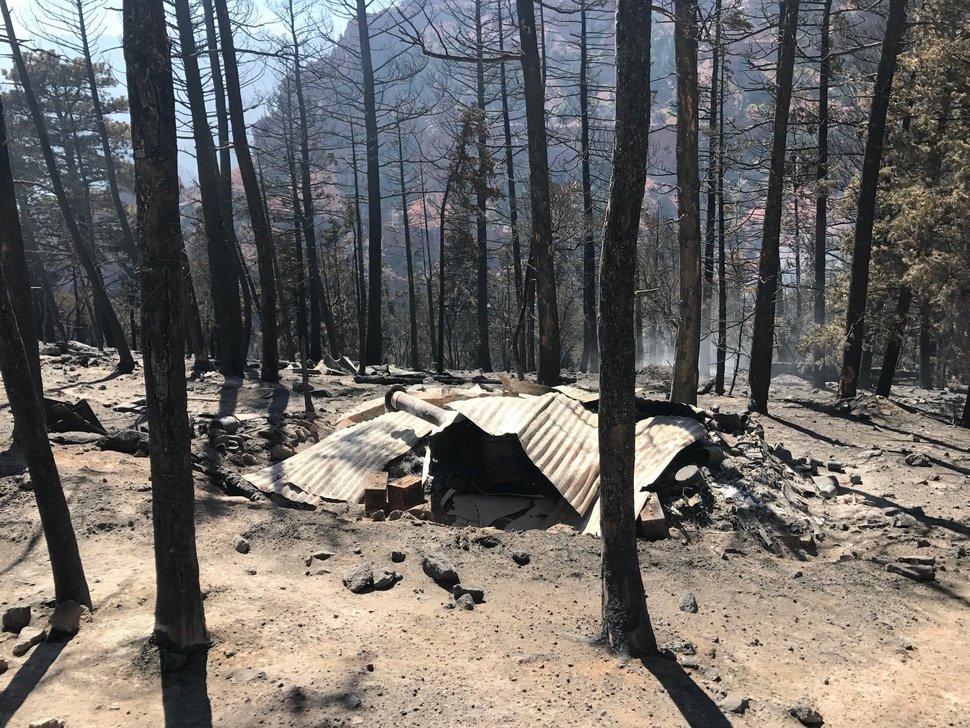December 4th is the birthday of Gregory “Pappy” Boyington, (born 1912) an AVG “Flying Tiger” volunteer pilot for the Chinese Nationalist government, WWII Marine Corps aviator, and Medal of Honor recipient. (He died January 11, 1988.) A proto-Redoubter, Pappy Boyington was born in Couer d’Alene, Idaho and was raised in Spokane, Washington.
- Ad Survival RealtyFind your secure and sustainable home. The leading marketplace for rural, remote, and off-grid properties worldwide. Affordable ads. No commissions are charged!
- Ad Civil Defense ManualClick Here --> The Civil Defense Manual... The A to Z of survival. Looks what's in it... https://civildefensemanual.com/whats-in-the-civil-defense-manual/
Kimber Ultra Carry II SP – By Pat Cascio
In this article, we’ll take a close look at the Kimber Ultra Carry II SP 1911. This is one of the smallest 1911 based handguns chambered in .45 ACP on the market.
Limited, Discontinued Splash 1911
I’m sad to say, it appears that Kimber has discontinued this particular base model 1911 and gone to some upper crust, more costly, smaller 1911s. It’s too bad! The gun under review here is the Ultra Carry II SP, and the SP stands for “Splash”. It was a limited product run available for sale at a SHOT Show a few years ago. I believe these guns were done up in five different “Splash” colored frames. They were, if the information I received was correct, limited to only 300 guns in each color. The sample I have has a “Splash” of red on the anodized aluminum frame.
An 1911 in .45 ACP- Good For Me and Military Service Since WW1
Long-time SurvivalBlog readers will readily know that if I were limited to just one handgun for the rest of my life, heaven forbid, then it would be a 1911 in .45 ACP in one guise or another. There simply aren’t many handguns on the market with the long history of the 1911. It has served in every major conflict our military has been in since WW1, and it continues to serve today with SpecOps warriors.
- Ad Click Here --> Civil Defense ManualNOW BACK IN STOCK How to protect, you, your family, friends and neighborhood in coming times of civil unrest… and much more!
- Ad USA Berkey Water Filters - Start Drinking Purified Water Today!#1 Trusted Gravity Water Purification System! Start Drinking Purified Water now with a Berkey water filtration system. Find systems, replacement filters, parts and more here.
Recipe of the Week: Spicy Brisket, by A.G.
Ingredients:
- 3 lbs lean beef brisket
- 1 tsp salt
- 1/4 tsp pepper
- 1 sliced onion
- 1 stalk celery, chopped
- 1/2 cup chili sauce
- 1 can beer
Continue reading“Recipe of the Week: Spicy Brisket, by A.G.”
- Ad California Legal Rifles & Pistols!WBT makes all popular rifles compliant for your restrictive state. Choose from a wide range of top brands made compliant for your state.
- Ad LifeSaver 20K JerryCan Water PurifierThe best water jerrycan you can buy on the market! Mention Survivalblog for a Free Filter ($130 Value)
Economics & Investing For Preppers
Here are the latest items and commentary on current economics news, market trends, stocks, investing opportunities, and the precious metals markets. We also cover hedges, derivatives, and obscura. And it bears mention that most of these items are from the “tangibles heavy” contrarian perspective of JWR. (SurvivalBlog’s Founder and Senior Editor.) Today’s focus is on the coming Dollar Decline.
Precious Metals (Dollar Decline):
First up–and most importantly–there is this at Zero Hedge: Russia, China, India Unveil New Gold Trading Network. JWR’s Comment: This news is another nail in the coffin for the Petrodollar. In the long term, the U.S. Dollar is losing preeminence as a global commodities exchange currency and reserve currency. Once the Dollar reaches a psychological breaking point, it will be substantially revalued downward. I’ve warned you before, folks: It it time to hedge out of U.S. Dollars and your U.S. Dollar-denominated investments. Tangibles–including silver–will be your safe harbor!
o o o
Stock Market:
Next, this at Seeking Alpha: December 2017 Stock Considerations
Continue reading“Economics & Investing For Preppers”
- Ad USA Berkey Water Filters - Start Drinking Purified Water Today!#1 Trusted Gravity Water Purification System! Start Drinking Purified Water now with a Berkey water filtration system. Find systems, replacement filters, parts and more here.
- Ad Don't wait - get the ultimate US-made ultra-high performance US-made SIEGE Stoves and stunning hand-crafted SIEGE belts for Christmas. For stocking-stuffers see our amazing fire-starters. Gifts that can save lives. Big Sale!Every bespoke SIEGE buckle goes through an hours-long artisanal process resulting in a belt unlike anything else, with blazing fast performance and looks and comfort to match.
The Editors’ Quote of the Day:
“Every individual necessarily labors to render the annual revenue of society as great as he can. He generally neither intends to promote the public interest, nor knows how much he is promoting it. He intends only his own gain, and he is, in this, as in many other cases, led by an invisible hand to promote an end which was not part of his intention.” – Adam Smith
- Ad Trekker Water Station 1Gal Per MinuteCall us if you have Questions 800-627-3809
- Ad Ready Made Resources, Trijicon Hunter Mk2$2000 off MSRP, Brand New in the case
Preparedness Notes for Sunday – December 03, 2017
Today is the birthday of actor Brendan Fraser (born, 1968.) He often plays “fish out of water” roles. Preppers of course remember him from Blast From The Past.
o o o
SurvivalBlog Writing Contest
Today features another entry for Round 74 of the SurvivalBlog non-fiction writing contest. The nearly $11,000 worth of prizes for this round include:
First Prize:
- A $3000 gift certificate towards a Sol-Ark Solar Generator from Veteran owned Portable Solar LLC. The only EMP Hardened Solar Generator System available to the public.
- A Gunsite Academy Three Day Course Certificate. This can be used for any one, two, or three day course (a $1,095 value),
- A course certificate from onPoint Tactical for the prize winner’s choice of three-day civilian courses, excluding those restricted for military or government teams. Three day onPoint courses normally cost $795,
- DRD Tactical is providing a 5.56 NATO QD Billet upper. These have hammer forged, chrome-lined barrels and a hard case, to go with your own AR lower. It will allow any standard AR-type rifle to have a quick change barrel. This can be assembled in less than one minute without the use of any tools. It also provides a compact carry capability in a hard case or in 3-day pack (an $1,100 value),
- Two cases of Mountain House freeze-dried assorted entrees in #10 cans, courtesy of Ready Made Resources (a $350 value),
- A $250 gift certificate good for any product from Sunflower Ammo,
- Two cases of Meals, Ready to Eat (MREs), courtesy of CampingSurvival.com (a $180 value), and
- American Gunsmithing Institute (AGI) is providing a $300 certificate good towards any of their DVD training courses.
Second Prize:
- A Model 175 Series Solar Generator provided by Quantum Harvest LLC (a $439 value),
- A Glock form factor SIRT laser training pistol and a SIRT AR-15/M4 Laser Training Bolt, courtesy of Next Level Training, which have a combined retail value of $589,
- A gift certificate for any two or three-day class from Max Velocity Tactical (a $600 value),
- A transferable certificate for a two-day Ultimate Bug Out Course from Florida Firearms Training (a $400 value),
- A Trekker IV™ Four-Person Emergency Kit from Emergency Essentials (a $250 value),
- A $200 gift certificate good towards any books published by PrepperPress.com,
- RepackBox is providing a $300 gift certificate to their site.
Third Prize:
- A Royal Berkey water filter, courtesy of Directive 21 (a $275 value),
- A large handmade clothes drying rack, a washboard, and a Homesteading for Beginners DVD, all courtesy of The Homestead Store, with a combined value of $206,
- Expanded sets of both washable feminine pads and liners, donated by Naturally Cozy (a $185 retail value),
- Two Super Survival Pack seed collections, a $150 value, courtesy of Seed for Security, LLC,
- Mayflower Trading is donating a $200 gift certificate for homesteading appliances, and
- Two 1,000-foot spools of full mil-spec U.S.-made 750 paracord (in-stock colors only) from www.TOUGHGRID.com (a $240 value).
Round 74 ends on January 31st, so get busy writing and e-mail us your entry. Remember that there is a 1,500-word minimum, and that articles on practical “how to” skills for survival have an advantage in the judging.
- Ad STRATEGIC RELOCATION REALTYFOR SALE: Self-sustaining Rural Property situated meticulously in serene locales distant from densely populated sanctuary cities. Remember…HISTORY Favors the PREPARED!
- Add Your Link Here
Preparing for Infectious Diseases, by Maple
While there are many good articles out there on preparing for pandemics, there is little information that really breaks down infectious diseases and how to alter your actions depending on the disease. There are also conflicting reports on exactly what actions to take and if/when to take antibiotics and in what dosages. I hope this article will provide you with the tools you will need to decide what actions to take. This article will cover some basic infectious disease terms and patterns and then two resources you can use to decide what actions to take and when.
Infectious Diseases
When talking pandemics, you’re really talking about the spread of infectious diseases, as opposed to the other types of diseases, such as deficiency, genetic, and physiological. Infectious diseases are caused by bacteria, viruses, fungi, or parasites. While many of these organisms live in and on our bodies at all times, rarely causing problems, some can cause a range of minor irritations all the way up to death. Bacteria are single-celled organisms responsible for illnesses such as strep throat, urinary tract infections, and tuberculosis. Viruses are smaller than bacteria, causing a range of diseases from the common cold up to AIDS. Fungi induce many skin diseases such as ringworms, athletes’ foot, and can infect your lungs or nervous system. Parasites can be transmitted through bites or feces, such as Malaria obtained from a mosquito bite. Knowing which of the four ways a disease spreads can be important when stopping an infection.
The Spread of Infectious Disease
Infectious disease can be spread through direct or indirect contact. Direct contact is what you would expect: person to person, animal to person, or mother to unborn child. Indirect contact can include germs lingering on a surface, insect bites, or food/water contamination.
Continue reading“Preparing for Infectious Diseases, by Maple”
Book Release Announcement: My Thailand Calling
I’m pleased to announce the release of the latest book from Liberty Paradigm Publishing. It is the autobiography of Rynier Kruger, a Christian man who has devoted his life to missionary service in Thailand. He has spent more than 20 years there, and now speaks Thai fluently. The book, titled My Thailand Calling, was just released as a Kindle e-book, and as a Print On Demand trade paperback. Here is a description:
My Thailand Calling is the autobiography of Christian missionary Rynier Kruger. Born in Southern Rhodesia in 1952, Rynier Kruger had an idyllic boyhood growing up on his family’s isolated farm near Chipinge, near the border of Mozambique. As he reached his teens a revolt led by communist guerillas was in its early stages. In 1970, along with his older brother, Rynier enlisted in the Rhodesian Army. Following his military service, Rynier attended an agricultural college in South Africa. At the conclusion of the Rhodesian Bush War, Robert Mugabe was elected and promised sweeping reforms. Gradually, life was made difficult for Rhodesia’s farmers. Rynier’s entire extended family was forced to abandon their farms and leave the country, settling in South Africa. After graduating from college in 1981, he went to work for the Agricultural Marketing Board of South Africa. It was while working there that he came to saving Faith in Christ and he committed his life to Christian service.
This book would make an ideal gift for anyone who works in the missions field, or for anyone who is considering Christian missionary work. It is also great for anyone with an interest in the history of Rhodesia, or for anyone looking for insights into Thai culture and customs. Kruger is also a Gideon Society member, so the book would be of interest to all Gideons, and their supporters. Kruger’s valuable knowledge on how to reach foreign cultures with the Gospel of Christ and how to overcome language barriers is wonderful. In his book, Kruger warns of the many potential pitfalls of missionary service and he points out the deficiency of “short term” overseas missions.
The Kindle edition of My Thailand Calling is just $4.99 and the paperback edition is $12.95. The book is 286 pages and includes a section of photographs and a glossary. Even if you don’t buy a copy, please help spread the word, and pray for Rynier’s ministry.
- You can see Rynier’s latest prayer requests by “liking” the Thailand Prayer Movement Page.
- Rynier has a Flikr Photostream.
- You can also visit the web site: ThaiMissions.com
Full Disclosure: I was so inspired by Rynier Kruger’s life story that I decided to publish his book free of charge. All of Liberty Paradigm Publishing’s profits from this book are being assigned directly to supporting Rynier Kruger’s ministry. I am also providing more than a year of free advertising for the book, at SurvivalBlog. My only profit will come in the form of Amazon Associates commissions. – JWR
The Survivalist’s Odds ‘n Sods:
SurvivalBlog presents another edition of The Survivalist’s Odds ‘n Sods— a collection of news bits and pieces that are relevant to the modern survivalist and prepper from “HJL”. National Reciprocity is making news again as a bill is approved by the House panel.
A Better Mousetrap
Reader P.S. sent in this video on a mousetrap design that is over 427 years old and is still effective today. The video blogger has a number of mousetraps that he reviews. He will profile the mouse trap that is featured, often building them from scratch. He then places them in his barn with a video camera aimed at it to evaluate its performance. The best mouse trap I’ve every owned was profiled by him as well.
Acid Attacks in London
“honor” acid attacks are on the rise in London. In 2017 there have already been 454 acid attacks compared to 261 in 2015 and 166 the year before. This is such a cowardly type of attack which I would put on par with the “knockout game” attacks that plagued the large cities here in the states a few years ago. However, It should be noted that even the victims want the state to control the sale of acid rather than cracking down on the persons who commit the crime. I guess Britons feel that acid jumps from the cup into their face much the same way that American liberal leftists believe that guns fire by themselves in the commission of crimes.
The Editors’ Quote of the Day:
“Then cometh he to his disciples, and saith unto them, Sleep on now, and take your rest: behold, the hour is at hand, and the Son of man is betrayed into the hands of sinners. 46 Rise, let us be going: behold, he is at hand that doth betray me.” – Matthew 26:45-46 (KJV)
Preparedness Notes for Saturday – December 02, 2017
On December 2nd, 1823, what became known as the Monroe Doctrine was declared by President James Monroe to Congress outlining a foreign policy initiative that forbade European interference in the American hemisphere but also asserted U.S. neutrality in regard to future European conflicts.
o o o
SurvivalBlog Writing Contest
Today features another entry for Round 74 of the SurvivalBlog non-fiction writing contest. The nearly $11,000 worth of prizes for this round include:
First Prize:
- A $3000 gift certificate towards a Sol-Ark Solar Generator from Veteran owned Portable Solar LLC. The only EMP Hardened Solar Generator System available to the public.
- A Gunsite Academy Three Day Course Certificate. This can be used for any one, two, or three day course (a $1,095 value),
- A course certificate from onPoint Tactical for the prize winner’s choice of three-day civilian courses, excluding those restricted for military or government teams. Three day onPoint courses normally cost $795,
- DRD Tactical is providing a 5.56 NATO QD Billet upper. These have hammer forged, chrome-lined barrels and a hard case, to go with your own AR lower. It will allow any standard AR-type rifle to have a quick change barrel. This can be assembled in less than one minute without the use of any tools. It also provides a compact carry capability in a hard case or in 3-day pack (an $1,100 value),
- Two cases of Mountain House freeze-dried assorted entrees in #10 cans, courtesy of Ready Made Resources (a $350 value),
- A $250 gift certificate good for any product from Sunflower Ammo,
- Two cases of Meals, Ready to Eat (MREs), courtesy of CampingSurvival.com (a $180 value), and
- American Gunsmithing Institute (AGI) is providing a $300 certificate good towards any of their DVD training courses.
Second Prize:
- A Model 175 Series Solar Generator provided by Quantum Harvest LLC (a $439 value),
- A Glock form factor SIRT laser training pistol and a SIRT AR-15/M4 Laser Training Bolt, courtesy of Next Level Training, which have a combined retail value of $589,
- A gift certificate for any two or three-day class from Max Velocity Tactical (a $600 value),
- A transferable certificate for a two-day Ultimate Bug Out Course from Florida Firearms Training (a $400 value),
- A Trekker IV™ Four-Person Emergency Kit from Emergency Essentials (a $250 value),
- A $200 gift certificate good towards any books published by PrepperPress.com,
- RepackBox is providing a $300 gift certificate to their site.
Third Prize:
- A Royal Berkey water filter, courtesy of Directive 21 (a $275 value),
- A large handmade clothes drying rack, a washboard, and a Homesteading for Beginners DVD, all courtesy of The Homestead Store, with a combined value of $206,
- Expanded sets of both washable feminine pads and liners, donated by Naturally Cozy (a $185 retail value),
- Two Super Survival Pack seed collections, a $150 value, courtesy of Seed for Security, LLC,
- Mayflower Trading is donating a $200 gift certificate for homesteading appliances, and
- Two 1,000-foot spools of full mil-spec U.S.-made 750 paracord (in-stock colors only) from www.TOUGHGRID.com (a $240 value).
Round 74 ends on January 31st, so get busy writing and e-mail us your entry. Remember that there is a 1,500-word minimum, and that articles on practical “how to” skills for survival have an advantage in the judging.
Hope With A Temporal Leftist Regime- Part 2 , by JRV
We have reflected upon the situation of the leftist influence and pressures in our culture. It goes beyond pressures to now forcible ideology in some instances. It is, as Jacques Mallet du Pan (1749—10 May 1800), wrote about the first leftist reign of terror, in his 1793 essay that “…the Revolution always eats its own children.” In Part 1, I wrote of many examples in history of socialists doing just that as communist and socialist leaders collided. I also wrote about the cultural marginalization and the game the leftists are playing. But the optimistic twist about leftists or fascists is that they believe there is no god, and so, therefore, power holds the greatest value.
The Hope
And herein lies the hope: Simply, that the left will, as it always has, destroy itself. The only question is, of course, how many must suffer or die before that implosion? Will it be the 100 million that the Black Book of Communism (Oxford Univ. Press) says were murdered last century by the left? Or will people rise before that to derail the train to darkness?
The ray of hope may be exemplified in the recent Harvey Weinstein, Al Franken follies. Are we to believe the radical feminists, that women’s accusations are always right? Where does that leave uber leftists Wienstein and Franken? And what happens when Black women wish to co-opt the white women, when push comes to shove? Or to the native black women when immigrant women of color play the victim card against them? There are wheels within wheels of infinite regressions here. This returns me to the ouroborotic (the legend of a snake eating itself starting with its own tail) nature of the left.
Continue reading“Hope With A Temporal Leftist Regime- Part 2 , by JRV”
The Editors’ Preps for the Week
To be prepared for a crisis, every Prepper must establish goals and make long-term and short-term plans. Steadily, we work on meeting our prepping goals. In this column, the SurvivalBlog editors review their week’s prep activities. They also often share their planned prep activities for the coming week. These range from healthcare and gear purchases to gardening, property improvements, and food storage. This is something akin to our Retreat Owner Profiles, but written incrementally and in detail, throughout the year. We always welcome you to share your own successes and wisdom in the Comments. Let’s keep busy and be ready!
JWR
Dear SurvivalBlog Readers,
Our report this week is that we have little to report! In the past week we’ve been quite busy with house guests. Otherwise, things have been in quiet Winter Mode, here at the Rawles Ranch. We did some closet reorganizing and did some cleanup of our bunk house. Jim did some planning and parts ordering for an a gunsmithing project. He also ordered a digital caliper, which he will need for the same project.
The Survivalist’s Odds ‘n Sods:
SurvivalBlog presents another edition of The Survivalist’s Odds ‘n Sods— a collection of news bits and pieces that are relevant to the modern survivalist and prepper from “HJL”. Don’t build on public land! That’s the take away concept from today’s postings.
That Strange Neighbor
Neighbors got a surprise in Shelburne, Vermont over the last few weeks. Apparently, a woman at a Shelburne retirement community was planning to kill herself with ricin poison made from castor beans grown on the site. Federal officials found a bottle half full in the woman’s kitchen and she is accused of testing it on her neighbors on at least three occasions. Some residents showed symptoms consistent with ricin poisoning, but most did not. Authorities say that is probably because the strength of the homemade poison was low. While not much is known about the woman, the judge did reference a lengthy mental health history.
Homeless Encampments
In an attempt to deal with the burgeoning homeless population cities like Los Angeles have been spending significant amounts of money on “street strategies” which include services like camp cleanup, mobile showers, storage facilities and homeless parking lots. However, the homeless population is increasing so rapidly that the city is struggling to keep up and much of the money intended to provide services ends up being diverted to camp sweeps. The money for services was intended to help get people off of the streets, but it isn’t working so well. Unsurprisingly, there is opposition to the services from local communities who don’t want homeless camps in their neighborhood and the city can’t find agencies to provide the services and wouldn’t let churches participate. Count this as another leftist fail.
The Editors’ Quote of the Day:
“For the day of the Lord is near upon all the heathen: as thou hast done, it shall be done unto thee: thy reward shall return upon thine own head.” – Obadiah 1:14 (KJV)















